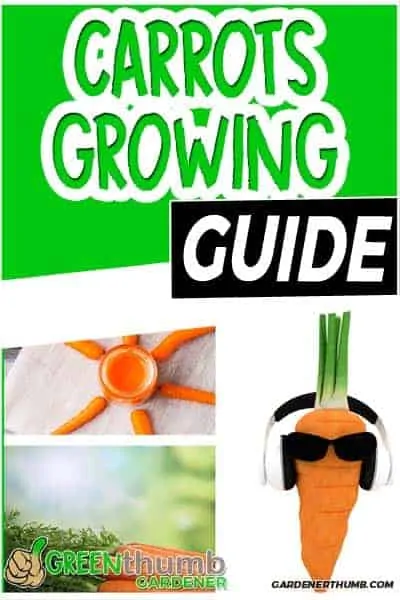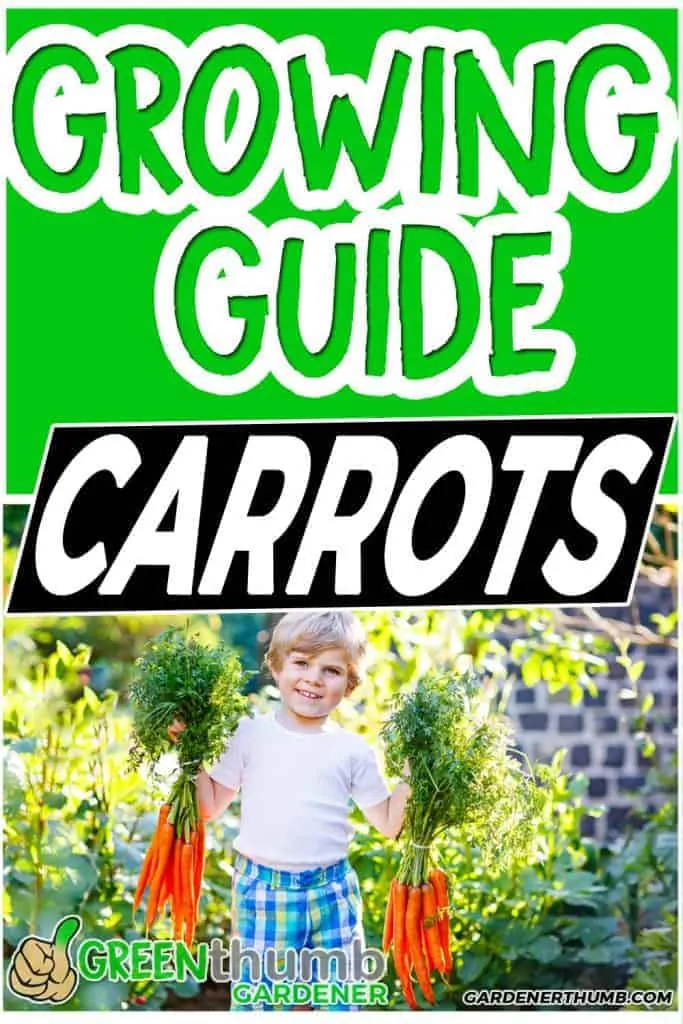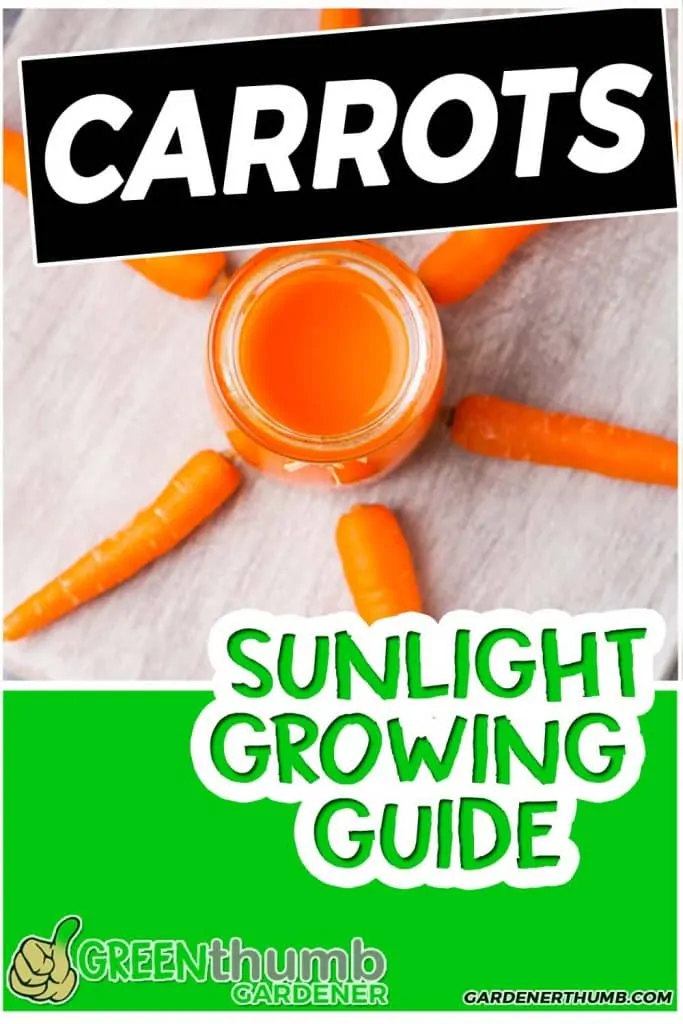Do Carrots Need Full Sun?
Last updated: 10/31/21
Do carrots need full sun is a question that many seem to ponder.
Yes, they do because they are a winter crop, and they need as much sun as they can get.
Growing a few may seem difficult, but with just a little huff and puff, you can grow plenty for months of storage.
Green thumb Gardener occasionally links to product and/or services offered by vendors to assist you with all your gardening needs. Some of these may be affiliate links, meaning we earn a small commission if items are purchased.
Want to Download a Garden Hack Guide for FREE

Enter your email below and we will send you a guide to help you SAVE money in your garden.
When you are embarking on a 70 to 80 days journey of growing carrots:
There are so many questions to ask, in addition to its sunlight requirements.
We have to understand the type of vegetable it is and the conditions to grow a few successfully.
Carrots grown above 80 F have bad taste, and below 50 F stops their growth rate.
Since they are best to be grown in winter, they need full sun exposure, but no worries if there is a little shade.
Carrots can tolerate light frost, but not for too long.
Like any other vegetables, the temperature and season for growing carrots should be ideal.
The best time to grow is winter, and the right temperature is between 60 and 70 Fahrenheit.
What are the Benefits of Growing carrots?
There are tons of benefits such as:
- They are rich in sugar and best as a snack.
- You can store them for months.
- Best sources of carotene and vitamins.
- Most carrots have an orange color, but you can grow varieties from purple to white for family.
- Growing saves a lot of money, and you get fresh supply just from your backyard.
- Hand grown carrots are healthier since not many chemicals are used.
- Carrots have a lot of medicinal properties for the body.

What Should Be The Ideal Soil Condition? And How To Prepare?
You can’t throw the seeds in an open field with full sun and expect carrots to grow.
The soil should be good for their growth, and the best soil is loose, free of clods/ debris, sandy, or loamy type.
Add some organic matter and ensure drainage works.
The hairy carrot you see in the market is grown in moist soil, which is not good.
A pH level of 5.5-6.5, not too acidic or too alkaline, is ideal for a healthy crop.
To prepare the soil, you can use a garden fork or tiller to loosen it up to 8-inches.
Break up clods and remove all the rocks to balance the soil.
Use a rake to smoothen the bed.
While you are at it:
You are doing so much work to grow carrots, add 2-4 inches of composite, such as leaf litter, to replenish some nutrition.
LEARN MORE: How Long Do Carrots Last | 7 Ways to Know & Make Them Last
Best Fertilizer and How to Use?
If the soil is low in nutrition, then we move to fertilizer.
First, understand which fertilizer is the best, and then we learn how to use it.
There are three most essential compounds in fertilizers; nitrogen, potassium, and phosphate.
Nitrogen forces plants to have more foliage since carrot is a root.
We need less nitrogen and more of the rest of the two because they are best for root development.
The combination on the fertilizer bag could be 5-10-10, which means 5% nitrogen, 10% potassium, and 10% phosphate.
You could also buy 0-10-10/5-15-15, which is good as well.
Using fertilizer is a difficult process because too much or too little won’t produce good results.
Use one cup of fertilizer for every 10 feet and mix it up to 3-4 inch deep with a rake.
Evenly distribute and make sure there aren’t pockets.
Plant your seeds and wait until they emerge up to 4 inches.
Sprinkle some more fertilizer on the growing area, but this time not more than 2 tablespoons for 10 feet.

Slightly mix with a growl, just a gentle touch, and don’t work it into the soil.
Let them grow up to 6-8 feet and check topmost leaves. If they are pale, then apply 2 tablespoon fertilizer once again.
Best Way to Water Carrots
An important part of growing carrots is watering. You should start thinking about one week after planting seeds.
Keep following in consideration:
- If there is no rain, then you will have to water yourself. Use drip irrigation or a soaker hose; they can be expensive, but if you have a better option, use that.
- Dig 4 inches deep into the soil besides carrots; if the soil is moist, then you are good, and if not, then time to water.
- Water slowly so that soil isn’t affected.
- A carrot grows up to 6 inches, so this is how much you need to water. If the bottom doesn’t get enough water, carrots won’t grow up to their full size.
- The best time is the morning; this will ensure unused water evaporates in the afternoon.
- Once carrots start emerging, add some mulch. It will help the soil keep the water.
- If carrots aren’t getting taller, you can add some more mulch. Use chopped leaves or grass clippings as a mulch.

Further Reading
When is the right time to harvest?
They will be ready to harvest between 70 and 80 days, or when they are half an inch in diameter.
You can start planting just before the winter, time-it-well because they don’t like summer.
They are much sweeter if you harvest in winter.








